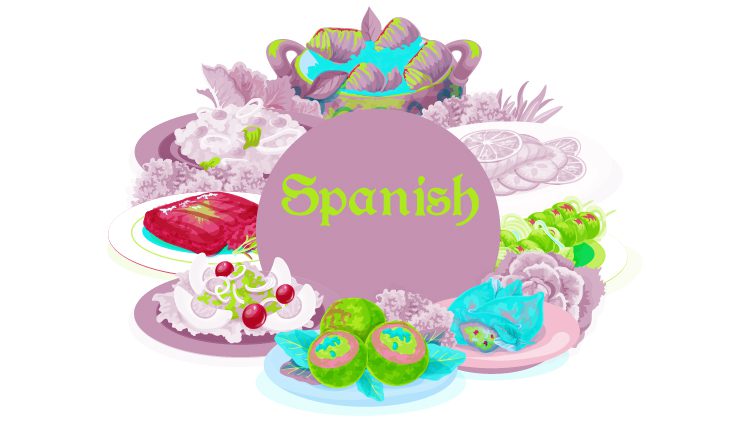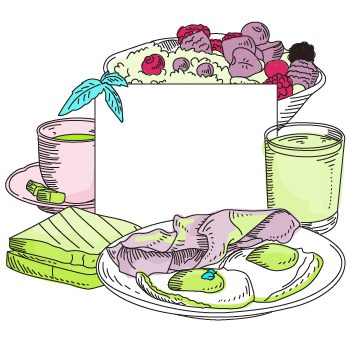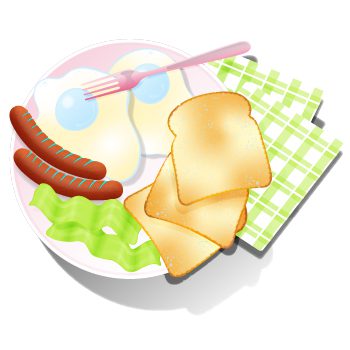
What is a typical Spanish breakfast: Everything You Need to Know
What do the Spanish eat for breakfast?
Regarding breakfast in Spain, you can expect various delicious options. One popular choice is a cup of café con leche, a latte with equal coffee and warm milk. Another classic option is orange juice, often freshly squeezed and bursting with natural sweetness.
One staple of the Spanish breakfast table is bread. Whether toasted or not, bread is often served with a drizzle of extra virgin olive oil and a sprinkle of salt. This simple yet flavorful combination is known as “pan con tomate,” or bread with tomato.
For those with a sweet tooth, churros con chocolate is a must-try. These deep-fried pastries are typically served with a thick, rich hot chocolate for dipping. It’s a decadent and indulgent treat perfect for starting your day on a delicious note.
If you prefer something heartier, choose a Spanish sandwich called a “bocadillo”. It typically consists of slices of bread filled with various ingredients such as Serrano ham, cheese, and tomato.
Additionally, the Spanish breakfast offers a diverse range of options catering to all tastes and preferences. Whether you prefer a hot coffee with milk or a savory dish like French toast, you’ll find something to satisfy your cravings.


The cultural significance of breakfast in Spain
Breakfast is considered Spain’s most important meal of the day and holds great cultural significance. Spaniards believe that a hearty and delicious breakfast sets the tone for the rest of the day. It is a time for families to gather and connect before starting their day. In many households, breakfast is enjoyed together, fostering community and togetherness.
Embrace Spanish breakfast traditions through iconic dishes. For example, Beyond simplicity, “pan con tomate” signifies quality: fresh bread and ripe tomatoes combine for a satisfying, flavorful experience. “Tostada con aceite y tomate” reflects Spanish ingenuity, turning stale bread into breakfast magic through toasting, olive oil, and tomato.
The cultural significance of breakfast in Spain goes beyond the food itself. It is a time for people to slow down and savor their morning meal, engage in conversation and connect with loved ones. It is a moment to appreciate life’s simple pleasures, like sipping a cup of café con leche or indulging in a sweet pastry. Breakfast in Spain is more than just a meal; it is a cherished ritual that celebrates family, food and the start of a new day.
Exploring the Delights of Traditional Spanish Breakfast Cuisine
There are a few staples that you cannot miss. One classic option is the Spanish omelette, or “tortilla de patatas”. This hearty and flavorful dish is a local favorite, made with eggs, potatoes, and sometimes onions. It can be enjoyed hot or cold and is often served with crusty bread.
Another popular choice is “churros,” which are long, fried dough pastries. They are typically sprinkled with cinnamon sugar and are best enjoyed hot and crispy. Often, they are accompanied by a cup of thick, rich hot chocolate for dipping. This indulgent treat is loved by both locals and visitors alike.
For those who prefer a lighter option, “tostada” is a great choice. It consists of toasted bread topped with various toppings. Some standard options include tomato spread, olive oil, grated fresh tomato, or “marmalade.” It can be served sweet or savory, depending on your preferences.
Finally, you cannot forget the traditional “Spanish hot chocolate.” It is much thicker and more prosperous than typical hot chocolate and is often served with churros. The hot chocolate is so thick that it can even be eaten with a spoon. It is the perfect accompaniment to a leisurely breakfast and is a true indulgence.
These traditional Spanish breakfast foods are just a taste of what you can expect in Spain. Each region has its specialties, so explore and try something new. Whether you’re craving something sweet or savory, the Spanish breakfast has something to satisfy every palate.


Popular modern breakfast options in Spain
You’re in luck if you’re looking for a modern twist on a traditional Spanish breakfast! Spain has embraced global culinary trends, and there are plenty of popular current breakfast options to satisfy your taste buds. One trendy choice is “avocado toast,” a beloved staple in many cafes nationwide. This healthy and Instagram-worthy dish consists of a slice of crusty bread topped with mashed avocado, sprinkled with lemon zest, and drizzled with extra virgin olive oil.
A similarly modern option is “yogurt bowls,” which have become increasingly popular in Spain. These bowls feature a creamy base of Greek yogurt, topped with various fresh fruits, nuts, and a sprinkle of powdered sugar. For those seeking a protein-packed start to the day, “protein pancakes” are a fantastic choice. These fluffy pancakes are made with protein powder, eggs, and almond milk, resulting in a delicious and filling breakfast.
Lastly, if you’re in the mood for something indulgent, “Spanish-style French toast” is a must-try. This delectable treat features thick slices of bread soaked in a mixture of beaten eggs, milk, and cinnamon, then pan-fried to perfection. Serve it with a drizzle of honey and a dusting of powdered sugar for a truly delightful experience. These popular modern breakfast options offer a fresh and exciting take on the traditional Spanish breakfast and will satisfy any craving!
Coffee culture in Spain
In Spain, coffee is not just a beverage; it’s a way of life. Coffee culture in Spain is deeply ingrained in the country’s daily routines and social fabric. Spaniards take their coffee seriously; specific customs and rituals surround this beloved drink.
Most popular coffee choice is “café con leche,” a latte made with equal parts of coffee and warm milk. It’s the perfect balance of bold espresso and creamy milk, and it’s typically enjoyed in the morning as part of a traditional Spanish breakfast.
Equally standard coffee order in Spain is “café solo,” an espresso shot. This potent and concentrated coffee is ideal for those who need a quick pick-me-up during the day. Spaniards often enjoy their café solo at local cafes, where they can take a break from their busy schedules and recharge with a cup of this refreshing drink.
Enjoying coffee in Spain is a social affair. Spaniards love to meet with friends or colleagues at a local cafe to catch up, share stories, and enjoy coffee together. It’s a time for connection and conversation and an essential part of the Spanish lifestyle.
Coffee culture in Spain also extends to the unique and charming cafes throughout the country. From historic coffee houses to trendy modern spots, there’s a coffee shop for every taste and preference. These cafes serve exceptional coffee and provide a cosy and inviting atmosphere for customers to relax and savour their beverages.
Whether you prefer a creamy café con leche or a bold café solo, experiencing the coffee culture in Spain is a must for any coffee lover. So sit back, sip your coffee, and immerse yourself in Spain’s vibrant and welcoming coffee scene.
Read more about what are typical Hispanic drinks.
Sweet breakfast treats in Spain
From delicious pastries to decadent desserts, there are plenty of options to satisfy your sweet tooth in the morning.
One popular choice is “tarta de Santiago,” a traditional almond cake from the region of Galicia. This moist and flavorful cake is made with ground almonds, sugar, eggs, and lemon zest. It is often dusted with powdered sugar and adorned with the iconic cross of Saint James.
Another beloved sweet treat is “Magdalena,” similar to muffins. These fluffy and tender pastries are often flavored with lemon zest and are perfect for dipping into coffee or hot chocolate.
For a unique breakfast experience, try “chocolate con churros,” a classic Spanish combination. Churros are deep-fried dough pastries that are typically dusted with sugar and cinnamon. They are served alongside a cup of thick, rich hot chocolate for dipping. It’s a match made in heaven for any chocolate lover.
If you prefer something lighter, “natillas” is a fantastic option. These creamy custards are flavored with vanilla and are often served with a sprinkling of cinnamon. They are a simple yet delightful way to satisfy your sweet cravings in the morning.
Overall, the sweet breakfast treats in Spain are diverse and delicious. From traditional almond cakes to indulgent pastries, there is something for everyone to enjoy. So don’t be afraid to indulge in sweetness to start your day on a delightful note.
Tips for experiencing an authentic Spanish breakfast
When experiencing an authentic Spanish breakfast, there are a few tips to remember. First and foremost, try to immerse yourself in the local culture and embrace the Spanish way of starting the day. Take the time to sit down and enjoy your breakfast, savoring each bite and appreciating the flavors. Remember, breakfast is not just about nourishment but also about the experience.
To truly experience a traditional Spanish breakfast, try different types of breakfast foods. Whether you opt for a sweet treat like churros con chocolate or a savory option like tortilla de patatas, the key is to explore the diverse range of options available. Don’t hesitate to step out of your comfort zone and try something new!
Additionally, seek out local breakfast spots and cafes that are popular among locals. This will give you a taste of the authentic flavors and an opportunity to connect with the community. Engage with the locals, ask for their recommendations, and initiate conversations. This will enhance your overall experience and allow you to immerse yourself in the Spanish breakfast culture fully.
Finally, embrace the leisurely pace of a Spanish breakfast. Unlike rushed breakfasts in other cultures, breakfast in Spain is meant to be enjoyed slowly and with company. Take your time, sip your café con leche, and indulge in the delicious flavors. Allow yourself to fully appreciate the moment and the simple pleasure of a traditional Spanish breakfast.
By following these tips, you’ll be able to fully experience and appreciate the authentic Spanish breakfast and all its cultural richness. So, get ready to embark on a gastronomic adventure and enjoy the delightful flavors of Spain!
Do Spanish people eat breakfast at home or outside?
Both options are standard in Spain. Some people prefer a quick breakfast at home, while others enjoy a leisurely breakfast at cafes.
Is a Spanish breakfast usually heavy or light?
Spanish breakfasts are generally light compared to other meals in the day. They focus on providing energy to start the day without overwhelming the digestive system.
What are "tostadas" in a Spanish breakfast?
“Tostadas” are toasted slices of bread often served with various toppings like olive oil, tomato spread (“tomate frito”), jam, or ham (“jamón”).
Are pastries a standard part of a Spanish breakfast?
Yes, pastries like “croissants” (called “cruasanes”) or “churros” are famous in Spanish breakfasts, especially in cafes and bakeries.
Is coffee a staple in a Spanish breakfast?
Yes, coffee is a staple in Spanish breakfasts. “Café con leche” (coffee with milk) is popular, enjoyed alongside other items.

